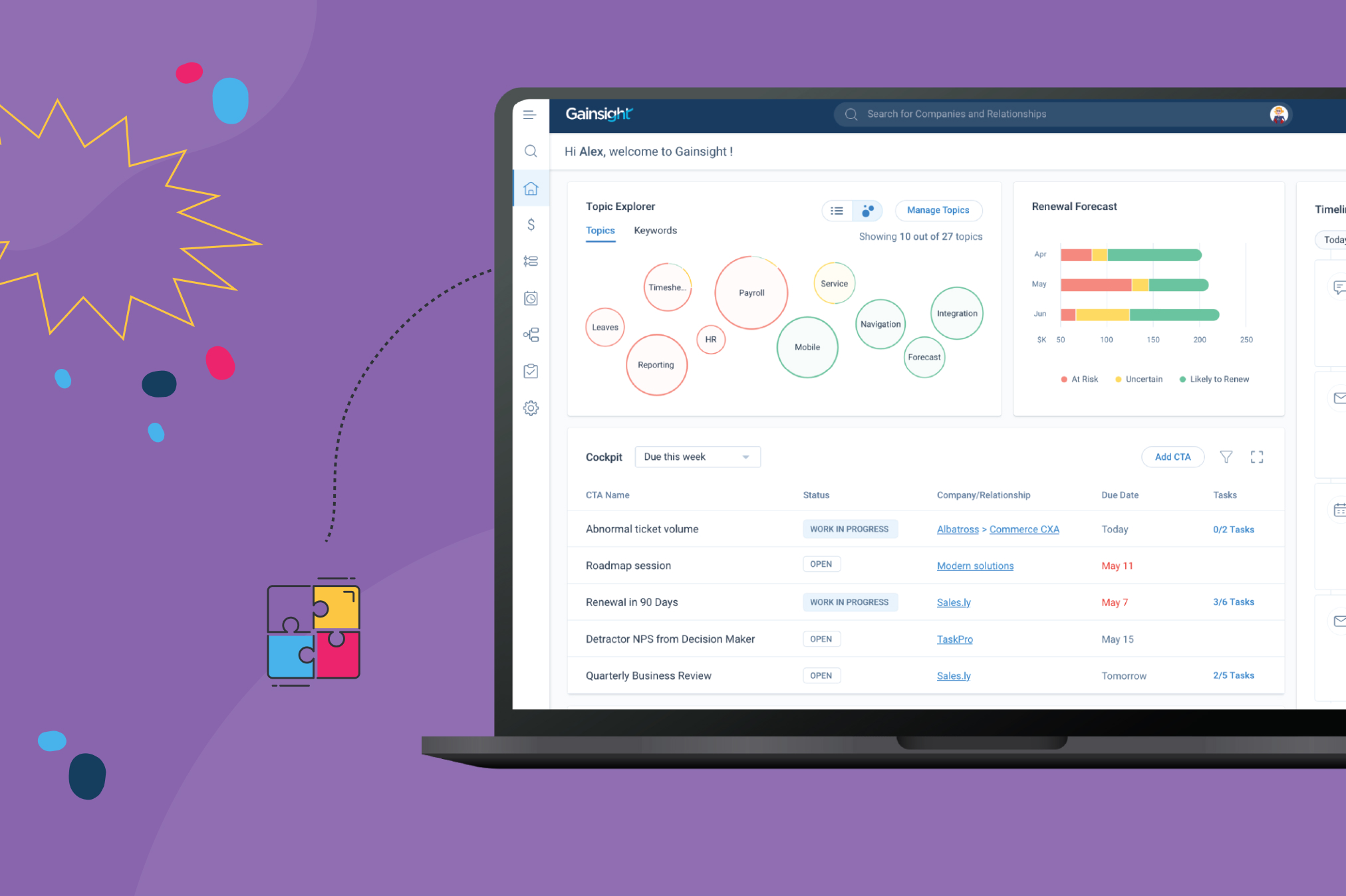By Evan Williams, Customer Success Advisor, Growth Molecules
Sales and Marketing is to new customer bookings as Product Management and Customer Success (CS) is to the customer experience. They’re the new hot couple!
Successful CS organizations should be well aligned with the PM organization. This crucial cross-functional partnership allows companies to truly deliver more than just features, it allows them to deliver outcomes. These outcomes translate to increased revenue and higher retention rates. Customers that achieve their business outcomes are more likely to continue to renew and expand.
How do we ensure this alignment between CS and Product? Just like any good relationship advice column, here are five tips to ensure that your relationship with product is strong so that your customer experience is remarkable.
1. Hang Out Regularly
Like any strong relationship, communication is key. Ensure that there is a clear, well-defined, communication channel between CS and Product. Create opportunities for regular “hangouts.” Consider implementing a recurring weekly or bi-weekly meeting between CSMs and Product Managers. This forum allows for CSMs to expand beyond the feature request to explain the pain points of their customers. In addition, this allows for the Product Managers to gain a holistic view of the different customers that may be experiencing the same pains. “For every complaining customer, there are 26 who remain silent when they have a problem with a product or service…This silent group simply cancels without you having an opportunity to fix the situation,” Fred Reichheld (Bain & Company). CSMs that are made aware of the challenges of other customers in this forum can work to ensure that there are no customers in their book of business that are experiencing the same.
2) Share Intimate Details
Even more important than frequent communication is quality communication. Product teams should communicate roadmap and customer updates regularly. The product roadmap should be easily accessible to the entire organization. A clearly defined roadmap will allow the CS team to effectively manage expectations of customers, resulting in more informed and more understanding customers.
Roadmaps are constantly changing, so any and all updates to the roadmap must be communicated immediately. It must be clear to CSMs how their customers’ feature requests are being prioritized and how to communicate the prioritization to the customers. Similarly, CSMs should be sharing key updates for top accounts and thematic findings across a CSM’s portfolio of accounts.
3) Avoid Hint Dropping
Sometimes, people are vague when asking for something (like dropping hints that you’re almost out of your favorite perfume). The best approach is to be direct and say “I would love some perfume as a gift.” CSMs have the responsibility of extracting similar information from customers to effectively communicate product feedback internally to their Product Manager partner(s).
The “Jobs to be Done” framework is a good approach asking the right questions to get to the root of what the customer is looking to achieve when they have a product enhancement request. For example, asking HOW will this feature request help them? Or, WHAT is the problem they are trying to solve? By focusing only on the immediate pain, they may be ignoring the root cause of the problem. Perhaps the customer’s pain point can be solved even more effectively by a piece of existing functionality. A CSM that is not only a product expert, but also understands the “Jobs to be Done” framework, will be able to identify the best solution, which may actually already exist.
4) Protect Your Partner’s Principles
When Product Management roadmap strategy has been solidified, it is best practice for a CSM to uphold that business vision when interfacing with customers. CSMs should avoid giving false hope to customers around feature requests that will never materialize, out of fear of saying “no” to the customer. An endless stream of “we’re working on it” and “I’m doing what I can to get this prioritized” messages keep the customer dangling on the request. Instead, a CSM that is well-informed on the product roadmap should confidently push back and tell a customer, “Unfortunately, this feature does not align with our product vision.” By being honest with the customer, the customer will have a definitive answer, and will not have to check in again for a status update. Provided that this item is not a major blocker, the customer will likely respect the transparency of the CSM and will move on. This move will also go a long way with your counterpart(s) within the Product Management organization.
5) Follow-Through On Your Commitments
In relationships, and in life in general, following through with a commitment is received favorably. Customers expect regular communication and updates on requests. Instead of waiting for the customer to reach out for status updates, provide intel proactively each week. Without timely updates, the customer is left in the dark and will assume no progress is being made, or worse, that their request has been thrown into a black hole. An update indicating that there is no update yet is better than silence. Once the feature has been deployed, the customer should be alerted. Additionally, if the update requires training or a walkthrough for the customer to understand, the Product team must enable the CSMs to demonstrate the feature and its value to customers.
In business-to-business software-as-a-service, cohesive customer experiences start with cohesive internal relationships. It is up to the members of the Product Management team and Customer Success team to nurture their relationship so they are tightly coupled. Transparency and communication between the two teams, as well as a process to organize feature requests and link them to customers allow for a best-in-class customer experience.

